Analysis
10/28/21
19 min read
Building the Perfect NFL Coach
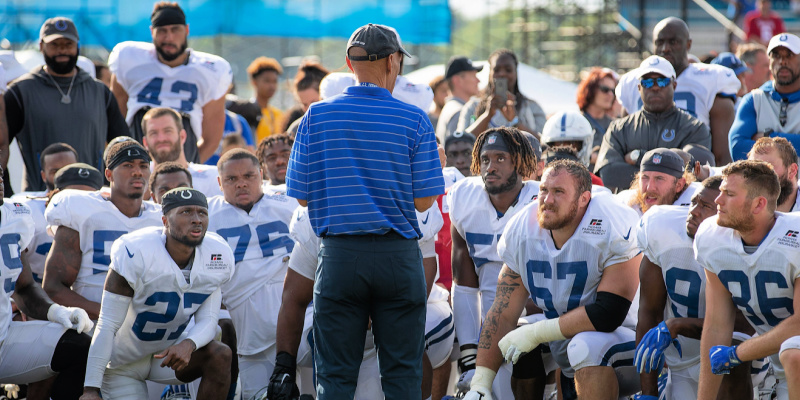
Hiring a football coach is an imperfect science. Building the perfect NFL coach isn't any easier. All you have to do is look at the hiring and firing numbers in the NFL over the last five years to realize that.
Since the end of the 2016 season, the league’s 32 teams have hired 33 head coaches. Nine teams are on their second swing at the coaching piñata during that period.
Every owner and general manager has an idea of what they want in a head coach and how to find the best man for the job. They spend weeks researching and interviewing prospective candidates. They talk to dozens of people who have employed them, worked with them, coached against them.
And yet, 33 coaching hires in five years.
Hall of Famer Bill Polian was as good as anybody at this head-coach-hiring thing. Polian, who spent 2 ½ decades running three different franchises – the Buffalo Bills, the Carolina Panthers and the Indianapolis Colts – hired five coaches during his NFL career.
Two of them – Marv Levy and Tony Dungy – are in the Hall of Fame with Polian. A third – Dom Capers – took the expansion Panthers to the NFC Championship Game in their second year of existence after Polian hired him.
A fourth – Jim Mora – turned the Colts around from a three-win team his first year to a 13-win division-winner in his third year. Mora won 173 games in the NFL and USFL.
A fifth — Jim Caldwell — took the Colts to the playoffs two times in three years, including a Super Bowl appearance.
“I was lucky in that I worked with the living template of what a good coach should be,” Polian said. “That was Marv Levy. He was my template. I used his characteristics for every other coach I hired.”
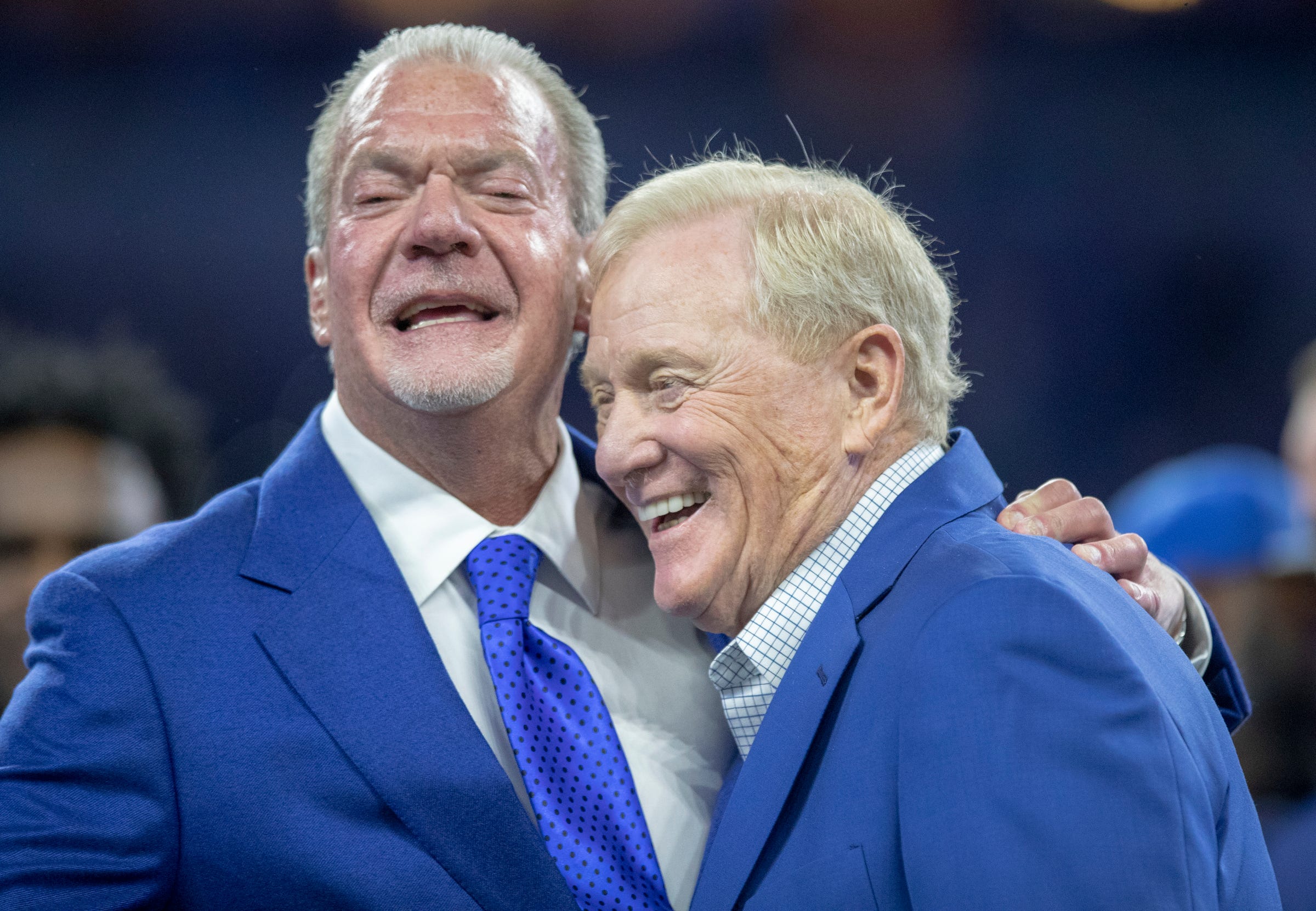
Levy took the Bills to four straight Super Bowls in the early ‘90s. What was that template?
“Superior intelligence, great communicator, great ability to lead and recognize the talents and personalities of his players,” said Polian, who co-wrote a book, Super Bowl Blueprints, with longtime pro football writer Vic Carucci which comes out next month. “And that’s really, really important in pro football.
“Marv had a sound grasp of the game. He understood that pro football is a player’s game. You have to have the flexibility to adjust your systems to the talent that you have and the environment that you’re in.
“A coach also needs to be able to create a culture. He creates it by the way he carries himself and the way he coaches his team.
“Marv used to tell his players to expect adversity and expect to conquer it. So, when things go bad, the players are looking to the head coach to help them through it. He’s the captain of the ship. They’re looking to him to lead them through the storm. A good coach has to have that ability.”
Polian and Carucci talked to dozens of players on Super Bowl-winning teams for their book. Polian said the common thread in most of the interviews was the impact the head coach had on each player.
“The one thing I came away from and didn’t know after 35 years in professional football was what an inordinate place a head coach has in the lives of the players,” Polian said. “I mean, he’s the voice they hear. He’s the guy they follow.
“They’ll talk about their position coaches, and they’ll talk about the Rooneys and the Maras and people who run great organizations. But when it comes down to saying why did you win this game, why did you win this championship, they always come back to the coach. Chuck Noll did this. Bill Walsh did that. He’s the guy. It’s not that I didn’t know that. It’s that I didn’t realize it’s the head coach to the exclusion of everything else.”
Joe Banner served as the Philadelphia Eagles’ president for 18 years. He and Eagles owner Jeffrey Lurie, who bought the franchise from Norman Braman in 1994 for $185 million (the franchise is valued at nearly $4 billion today), hired just two coaches during the time Banner was there – Ray Rhodes and Andy Reid.
Rhodes, who was hired the year after Lurie bought the Eagles, lasted four years and was fired after going 3-13 in 1998.
Lurie and Banner actually hired Rhodes over Dungy. Rhodes was the San Francisco 49ers’ defensive coordinator. The Niners had just won the Super Bowl. The then 39-year-old Dungy was the Minnesota Vikings’ defensive coordinator. Banner readily admits they blew that one, even though the Eagles did make it to the playoffs in Rhodes’ first two years as the team’s head coach.
“Ray had an infectious passion, which we mistook for leadership,” Banner said. “Infectious passion is a good quality. But it isn’t something that correlates in a major way to being a good NFL head coach.
“We interviewed Tony at the same time. We were a little nervous because he seemed too passive. Would that be contagious and spread to his staff and players? Would the team rally around this guy? We didn’t decide whether he was or he wasn’t. We just weren’t sure. We weren’t completely sold. Obviously that was a mistake.
“More than a quarter century later, it seems silly to think we had those kind of doubts about a guy who would end up in Canton. But when someone never has been a head coach, you just don’t know. Everything is conjecture.
“We learned the hard way that that infectious passion that we felt from Ray and put a lot of weight in, is not really a differentiating quality. Some great coaches are visibly passionate people. But others, like Tony, are less visibly passionate. Both types have a very good chance of being successful depending on their other qualities when it comes to being a head coach.”
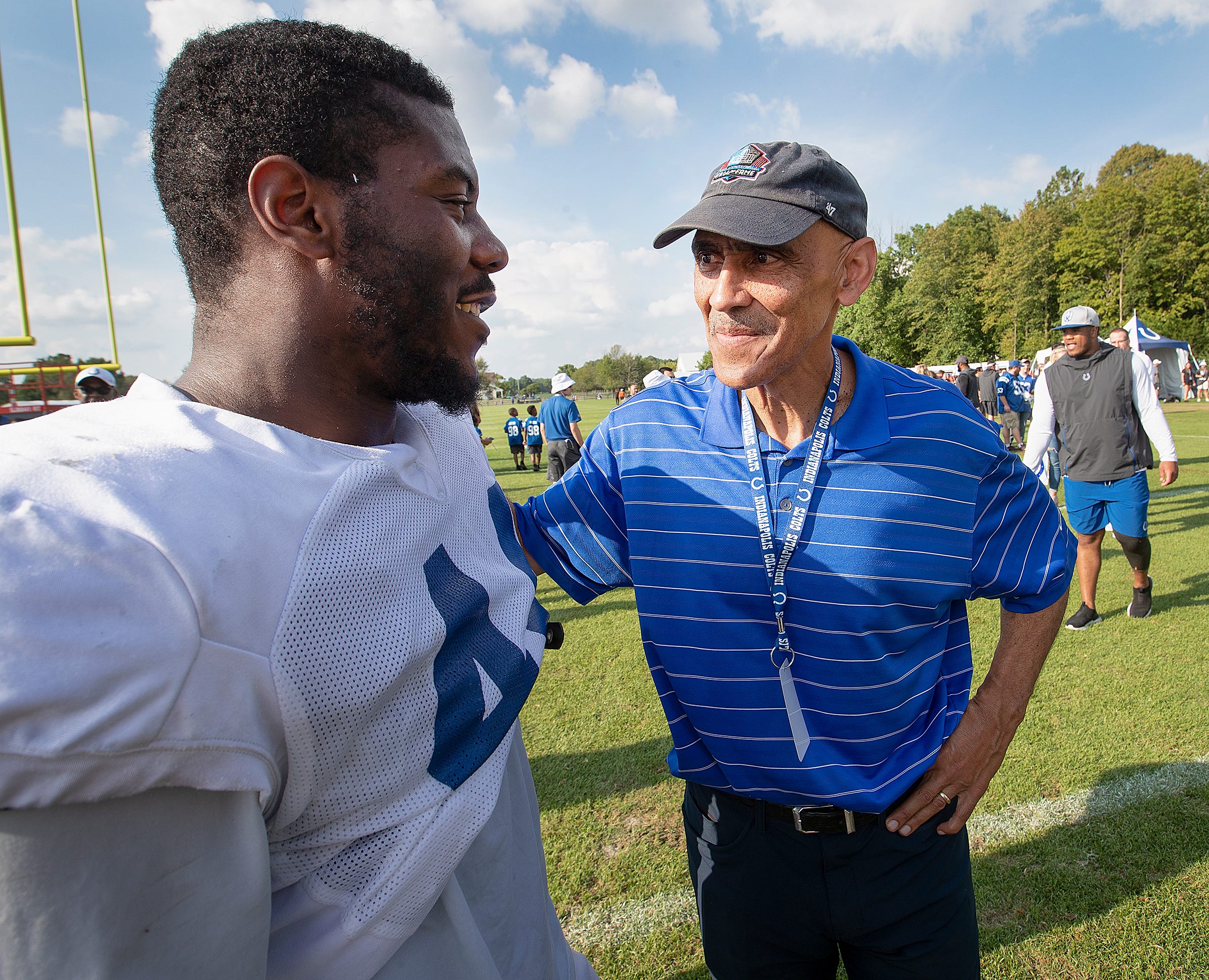
Colts Preseason Training Camp
Polian called Dungy one of the two greatest people he’s ever been around and one of the two greatest teachers.
“The reason Marv and Tony are in the Hall of Fame is because they’re incredible teachers,” Polian said. “Along with the teaching and the way they carry themselves and lead their own lives, they garner immediate respect.
“Once you have respect and trust – and Tony used to talk about trust being the glue that holds us together – then the rest of it, including their inspirational gifts, which were off the charts, come to the fore. But those don’t happen without the other characteristics, such as how they carry themselves and how they communicate.”
Polian still remembers the Colts’ second-half comeback against Bill Belichick and the Patriots in the 2006 AFC Championship Game.
“I think we were down by 18 and it looked like the roof was going to fall in,” he said. “We got the ball near the end of the first half and we were driving. I turned to (Colts director of football operations) Dom Anile and said, ‘If Vini (kicker Adam Vinatieri) kicks a field goal here, Tony will go in and get the defense straightened out and we’re going win the game.’
“Dom looked at me and said, ‘You’re crazy. You’ve lost your marbles. This is going to end badly, just like all the rest (the Patriots had beaten the Colts in the playoffs two of the previous three years).’
“I said, ‘No, I’m telling you. If Vinny kicks this field goal (to make it 21-6), we’re in good shape.’ He did and Tony went in and got them focused, got them quieted down and we came back and won the game and went on to win the Super Bowl.
“That’s what great coaches do. He didn’t call any plays. The team believed in him. When he said it was going to be all right, they believed it was going to be all right.”
When Banner and Lurie began the search for Rhodes’ replacement in 1999, they put together a list of NFL head coaches that had taken their teams to at least two Super Bowls — people like Holmgren and Levy and Joe Gibbs and Bill Parcells — and looked for characteristics that they all had in common that they hoped would help them find the perfect NFL coach.
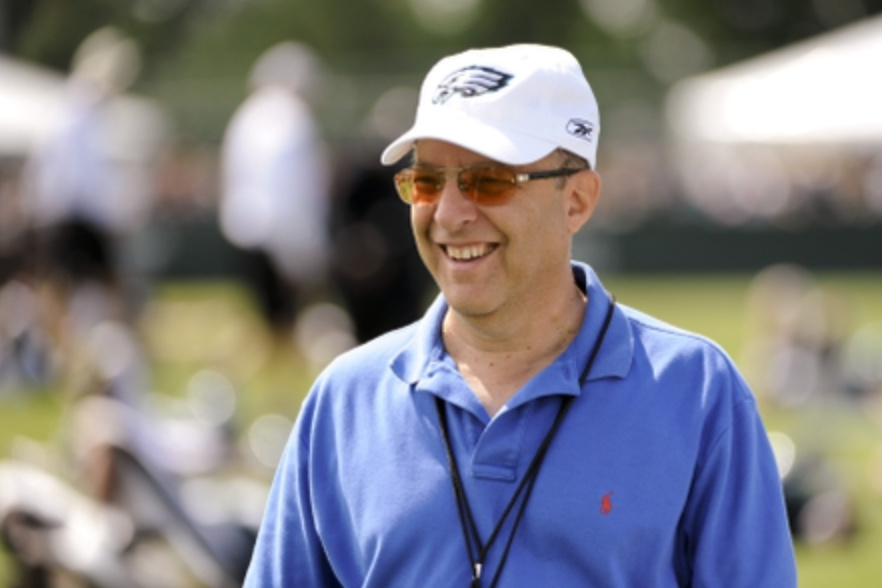
“What we found out first was, with respect to pure football questions, we couldn’t find many similarities,” Banner said. “There were offensive guys and defensive guys. Young guys and old guys. Guys that ran the ball and guys that passed on every down. Guys that blitzed and guys that didn’t.
“But then, what we found out semi by accident was that as you started talking to people about these guys, there were a whole bunch of other things they had in common. The obvious thing was they all were great leaders.
“But there were other things that weren’t as obvious, like they were all detail-oriented. They all were very obsessed with every small detail. All of the successful coaches literally annoyed the people around them with just how extreme their obsessiveness with every little detail was.
“So we started creating a non-traditional list and focused on that. Ironically, one of the things about the top coaches that we had researched was that even though we knew they all had different philosophies, they had a very strong conviction about their particular philosophy.
“Which makes sense. Because if you’re going to be a leader and people are going to follow you, you can’t have an ambiguous view. You have to have a clear vision as to where you’re trying to lead people, so they’re very clear about believing in you and your message and are willing to follow you. So, if you were someone who, say, was inclined to change your beliefs or alter your philosophy because of media criticism, you probably don’t have the strength of conviction you need to be a top NFL coach.”
Banner and Lurie ended up hiring a semi-unknown, Green Bay Packers quarterbacks coach Andy Reid, choosing him over Pittsburgh Steelers defensive coordinator Jim Haslett.
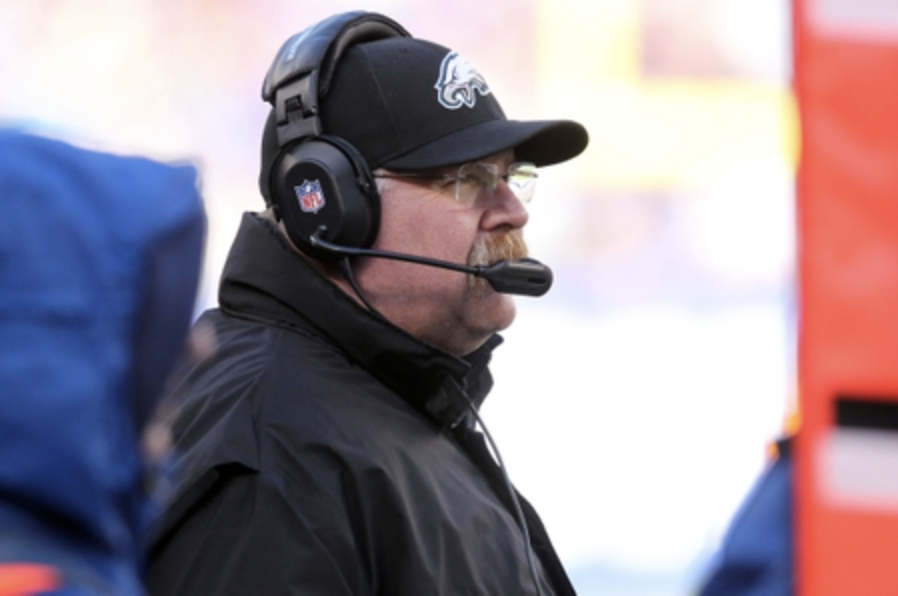
The Eagles were publicly second-guessed for the hire. Reid was a highly-regarded coach. But he never had been a coordinator.
“He had been working for a GM in Green Bay (Ron Wolf) who ended up going to the Hall of Fame,” Banner said. “Andy had been there eight years. Ron was looking for a coach at the same time we were because Mike (Holmgren) had just left to become the head coach and GM in Seattle. Ron didn’t even interview Andy. That’s because he was stuck in the stereotypical list of what you should be looking for. He thought Andy wasn’t ready.’’
The fact that Wolf didn’t interview Reid might’ve worried Banner and Lurie had they not spoken with Holmgren, who assured them that Reid was more than ready to be a head coach.
“No one had ever hired a head coach in the NFL who had either previously been a college head coach or an NFL coordinator,” Banner said. “But we didn’t really care about that. We cared about his conviction and where did it come from and why did he believe in it and who had he learned from.
“Being able to hire and manage a great staff was something that every single one of the great coaches we studied had in common. So if you’re interviewing somebody and you’re picking up that they’re really good at evaluating fellow workers, it usually means they have a really good philosophy about how to manage people.’’
Reid convinced Banner and Lurie of his obsession with detail and his commitment to his philosophy when he showed up for his initial interview with the Eagles lugging a huge notebook that, among other things, included Reid’s rankings of every NFL and college assistant coach.
“He had them rated 1 through 10 at every single position, whether it was a coordinator, a quality control coach, or a developing offensive line coach,” Banner said. “His list was so thorough that, if he didn’t hire X, he knew who the next top guy was that he wanted to pursue.
“Andy was the best I’ve ever worked with at working with and managing other people.”
Banner and the Eagles hit a home run with Reid. He spent 14 years in Philadelphia. During that time, the Eagles made it to the playoffs nine times, won six division titles, made it to the NFC Championship Game five times and the Super Bowl once.
Reid, who has spent the last nine seasons as the head coach of the Kansas City Chiefs, has 224 career wins and needs just three more victories to pass Curly Lambeau and become the fifth winningest coach in NFL history. A bust in Canton is a lock whenever Big Red retires.
Carl Peterson spent 20 years as the president and general manager of the Kansas City Chiefs and another three before that as the president and GM of the Philadelphia Stars of the United States Football League.
Peterson had the unique perspective of having been a coach himself, at UCLA and with the Eagles. He gave Jim Mora his first head-coaching opportunity, hiring him to coach the Stars, who won two league titles in the USFL’s three years of existence.
With the Chiefs, his head-coaching hires included Marty Schottenheimer, who took the team to the playoffs in seven of his 10 seasons as head coach, and Dick Vermeil, who is the coaching finalist for the Pro Football Hall of Fame’s class of 2022.
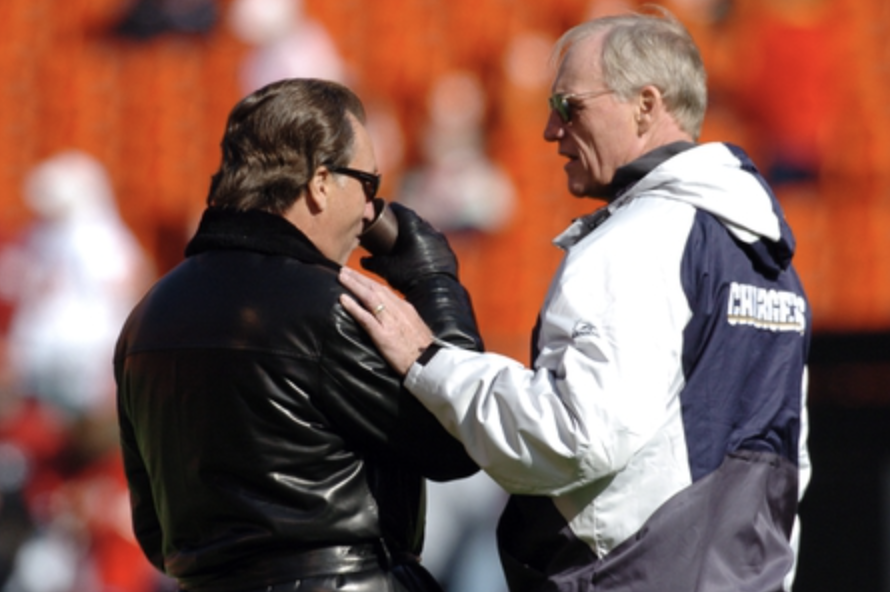
“There are a lot of cliches in football, but one thing you want in a head coach is a guy who can command the room,” Peterson said. “When he stands up to speak, will the players really focus and listen in intently? Or are they in the back screwing around and taking tape off of their hands or whatever and not paying attention?
“Jim, Marty and Dick all had the ability to get the undivided attention of all of their players. I looked for that and noticed that after practice when everybody was tired. No matter how they felt, they were going to take the time to hear what Dick and Jim and Marty had to say.”
Not every head coaching hire Peterson made was a bullseye. Between Schottenheimer and Vermeil, the Chiefs’ head coach was Gunther Cunningham, who had been Schottenheimer’s defensive coordinator. He lasted just two years before Peterson fired him.
“Some guys are outstanding coordinators, but just can’t take that last step up to be a head coach,” Peterson said. “It’s a huge transition to stop coaching the offense or the defense and be that head guy and have to oversee everything.
“Plus, there’s all the other things a head coach has to deal with. The media. Ownership. The fans. League matters. It can bury you pretty quickly. That was the problem with Gunther. He got too focused on what other people were thinking and writing and saying about him.
“He would spend hours early in the morning on his computer reading what they were saying about him and his coaching. You just can’t do that as a coach. You have to compartmentalize it. Put it away and move on to the next thing. And never forget your most important job. And that’s coaching your players and your coaches on what you want them to do and how you want them to do it.”
One of the things Peterson looked for when hiring a head coach was someone he felt he could work with and get along with. That was a big reason he coaxed Vermeil out of his second retirement after he won a Super Bowl with the Rams.
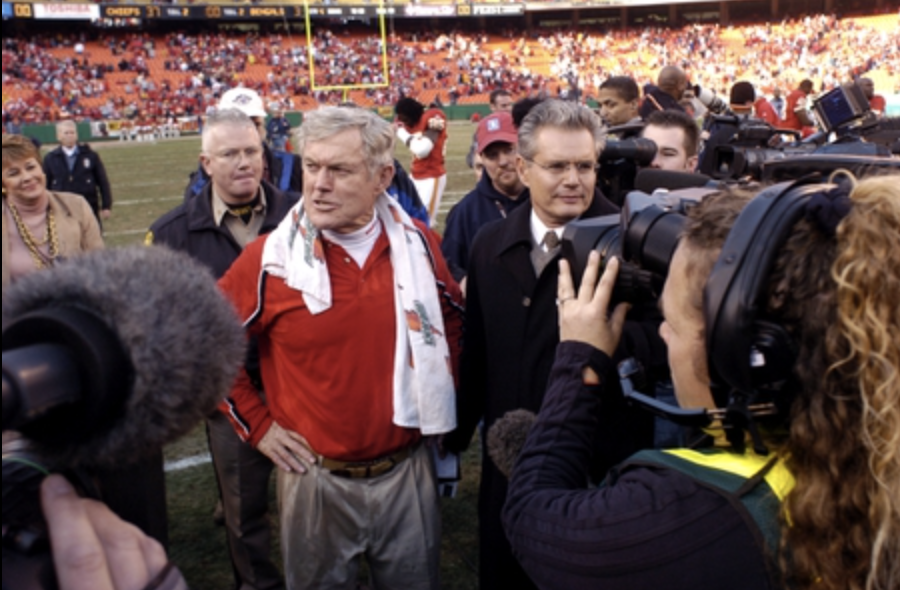
Peterson and Vermeil were long-time friends. Peterson had been on Vermeil’s staff at UCLA and with the Eagles and later became the Eagles’ player personnel director under Vermeil.
“The relationship between the head coach and GM is critical,” he said. “They’ve got to be on the same page. They’ve got to see the big picture the same way. They’ve got to feel that they’re both working hard to help each other be successful.
“The head coach doesn’t have to be the owner’s best friend. He doesn’t have to talk to him every day. But he does need to do that with the general manager, and vice versa.
“It gets back to trust. The head coach needs to trust that I’m getting him the players that he wants, the facilities that he wants, the environment he wants and needs to be successful.”
That’s not always the case. Peterson remembers running into his successor in Kansas City, Scott Pioli, the season after he left the Chiefs. Pioli had fired Peterson’s coach, Herm Edwards, and replaced him with Todd Haley. But Pioli quickly soured on Haley.
“(Pioli) told me he was ready to fire his head coach,” Peterson said. “I said, ‘Wait a minute. You just hired the guy. What do you mean you want to fire him?’ He said, ‘Well, I don’t trust the guy.’ I said, “Then why the hell did you hire him?’ He said, ‘Well, I didn’t really like the hire. He was my second choice.’”
Pioli eventually fired Haley midway through his third season as the Chiefs’ coach, even though the Chiefs had won the division the year before.
Schottenheimer, who coached the San Diego Chargers for five seasons later in his career, was fired by Chargers general manager A.J. Smith following the 2006 season even though the Chargers won a league-best 14 games that year.
“We were playing the Chargers about three weeks before the end of the season that year,” Peterson said. “I was talking to Marty and he was miserable. He said he hadn’t spoken to the GM in six weeks. Six weeks!
“I said, ‘You gotta be kidding me.’ He said he wasn’t. He said he would walk down the hallway and would pass the GM and say good morning and the GM wouldn’t even acknowledge he existed. They won 14 games, then lost to the Patriots in the playoffs and Marty became the only coach in history to get fired after a 14-2 season.”
Many owners today are infatuated with finding The Next Great Offensive Genius. The overwhelming majority of head-coaching hires over the last five years have been offensive-based coaches who handle their own play calling.
“I put no stock in play calling,” Polian said. “None whatsoever. That can be done by anyone. Managing the game and making the right strategic decisions is much more important (for a head coach).
“And understanding the strategy and how to win is critically important. Witness the Falcons’ collapse against the Patriots (in Super Bowl LI). I mean, that was horrible game management. Atlanta never should have lost that game.”
The Falcons had a 25-point lead late in the third quarter, only to have the Patriots score 31 unanswered points in 17-plus minutes and win, 34-28.
Bill Walsh is considered one of the great offensive geniuses in NFL history. Yet, Polian said that every time he talked to him, Walsh would talk “about creating the right culture and developing a system of football that is not necessarily Xs and Os, but how you teach it, how you teach the skills and techniques.’’
“Bill’s book, which is called The Score Will Take Care Of Itself, is still the best book I’ve ever read in terms of pure football and how to build and coach a team,” Polian said. “And none of it involves play calling, even though Bill was a great play caller and the inventor of an offensive system of football. But it was all the other things he emphasized.”
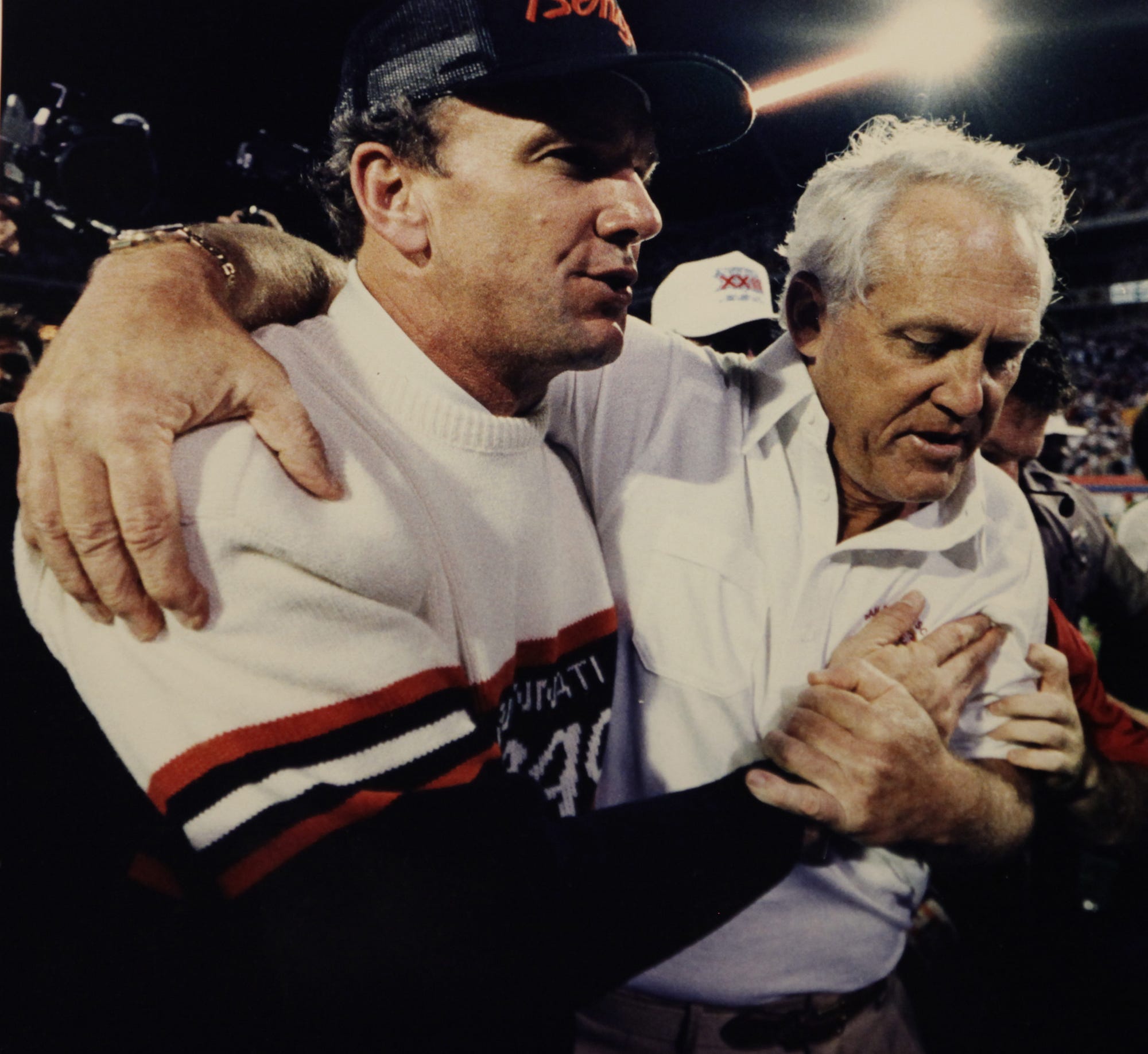
The Enquirer/Michael E. Keating
Banner used to be one of the people who felt you needed to hire a smart offensive guy as your head coach because he felt good young offensive coordinators were just going to get hired away.
“My feeling was how could you build continuity if you hire, say, a defensive guy as your head coach and then bring in a talented young offensive coordinator only to have him hired away as a head coach in 2-3 years?” Banner said.
“I finally realized that the Bill Belichicks of the world, who are so great at picking people, Bill finds the right offensive coordinator. The really good head coaches, and Andy is a great example of this, are excellent at finding the next right person for any job on their staff.
“I went from somebody who preferred an offensive-minded head coach to thinking it was a mistake to focus on that. Find these other things. Find a great leader, a great manager of people. Find someone with strong convictions and attention to detail. Find that person and trust that when they need to, they will find that next right coach for their staff.”








